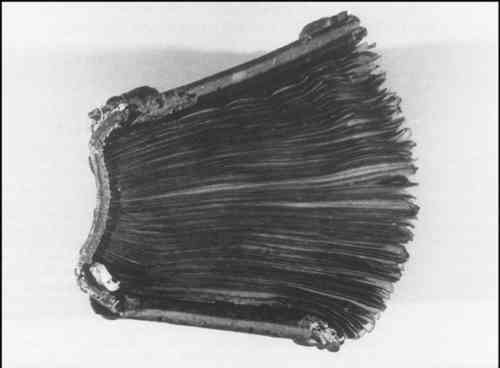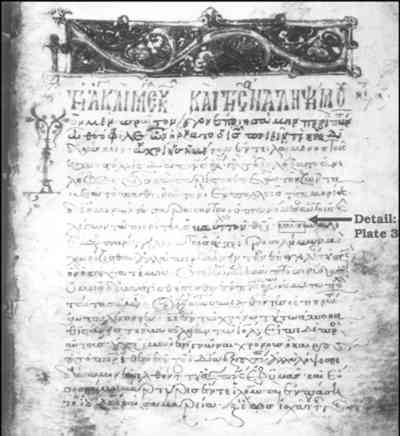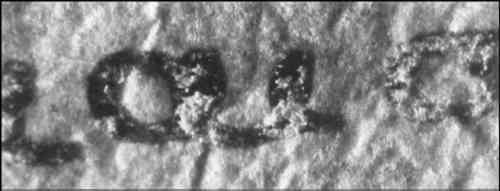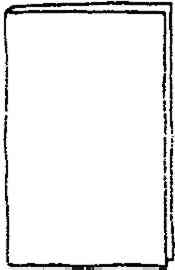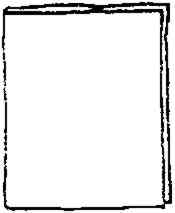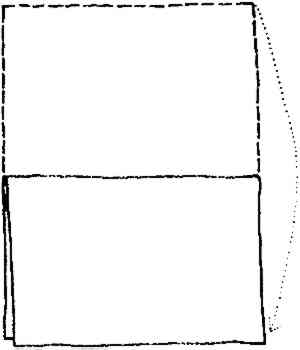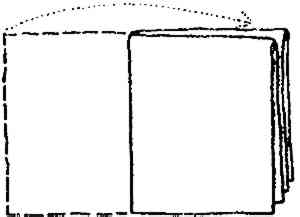A BYZANTINE SCHOLAR'S LETTER ON THE PREPARATION OF MANUSCRIPT VELLUMJeffrey Abt, & Margaret A. Fusco
NOTES1. By “fine,” Planudes appears to mean “thin.” 2. “Pot-bellied” may refer to the marked tendency of the vellum in some Byzantine manuscripts to cockle, resulting in an overall appearance that this language rather aptly describes (see plate 1).
3. By “better-polished,” Planudes clearly means “well-finished.” However, this terminology does draw attention to the Byzantine preference for glossy, polished surfaces in works of art. One example of this preference is the frequency with which Byzantine vellum exhibits a far more shiny appearance than is usually found in 4. Note Planudes' insistence that the egg coating, not the parchment, was the source of the problem. The purpose of the egg coating is unknown; however, it may well have been to impart a shiny or polished look to the leaves. Cennini felt egg glair provided an excellent intermediary ground for secco mural painting. See Cennino de'Andrea Cennini, Il libro dell'arte, The Craftsman's Handbook, trans. D. V. Thompson (New York: Dover, 1933), 51. Much of Cennini's advice reflects Byzantine practices that came to Italy from Greece, as argued by Ernst Berger, Quellen und Technik der Fresko-, Oel-, und Tempera-Malerei des Mittelalters (Munich, 1897), 96–97, and G. Loumyer, Les traditions techniques de la peinture medievale(Brussels, 1914), 116ff. 5. Even without the presence of water, flaking script in Byzantine manuscripts, while not as common as flaking pigment, does occur. However, the phenomenon is often incorrectly though plausibly described as “faded ink” (see plates 2, 3).
6. For a hypothesis concerning the Byzantine use of egg to coat vellum and the effects of this practice, see Abt, “Deterioration Mechanism in Byzantine Manuscript Illuminations of Greek Origin,” 1–14. For a recent confirmation of the use of egg as a medium in Byzantine illuminated manuscripts, see Mary Virginia Orna et al., “Applications of Infrared Microspectroscopy to Art Historical Questions Regarding Medieval Manuscripts,” In Archaeological Chemistry IV, Advances in Chemistry Series 220, American Chemical Society, Washington, D.C., 1989. 7. As will be seen below, by “two measures” Planudes means two sizes of prepared parchment (see figures 1a, 1b).
8. By “bifolium leaves,” Planudes means single sheets of vellum that have been folded to make double (bifolio) leaves (see figures 2a, 2b).
9. Apparently Planudes had the messenger carry with the letter a pair of sample bifolia to demonstrate the sizes he required. 10. Figures 2a, 2b. 11. Figures 3a–3d.
|
